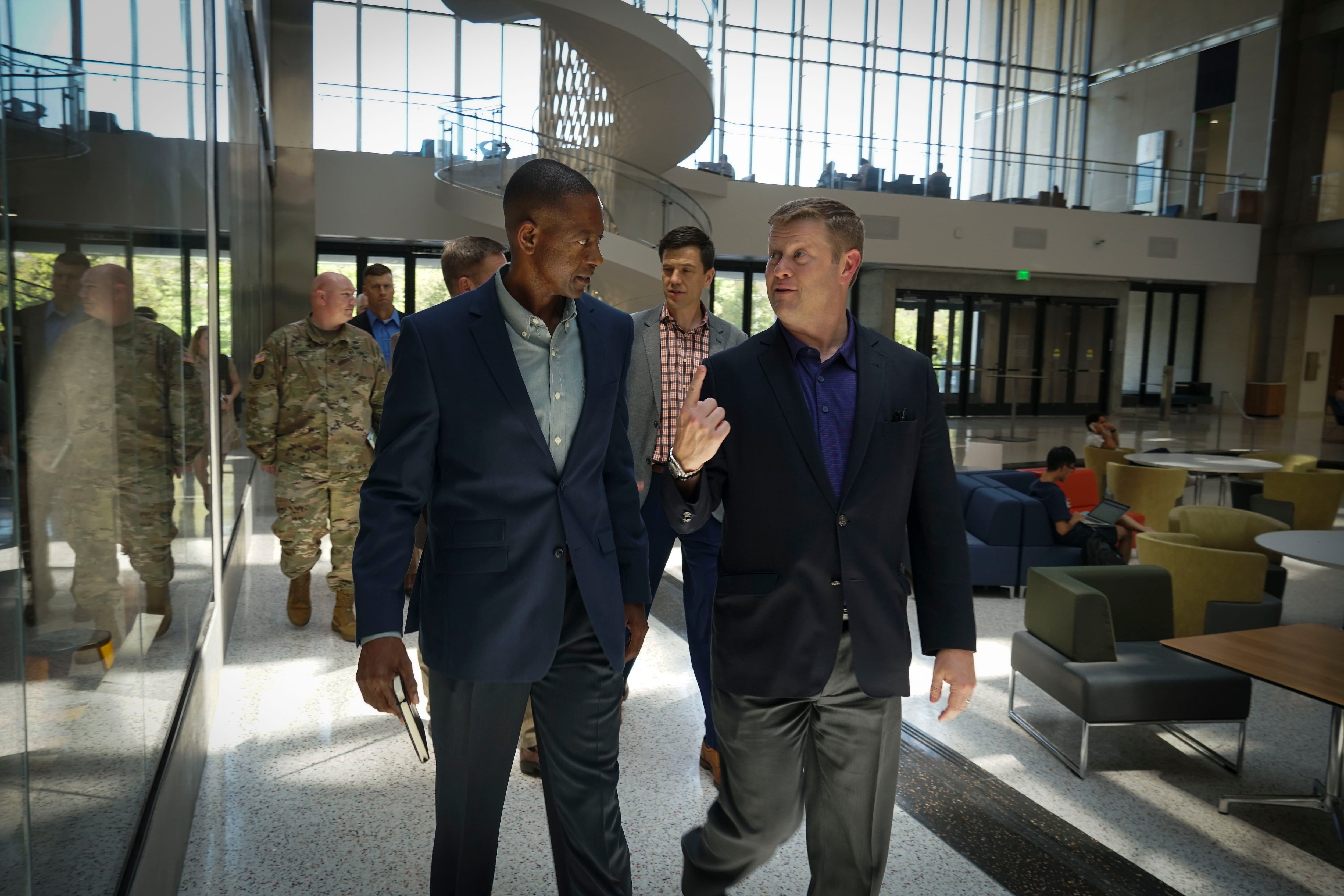Update — This story has been changed to reflect the Army did not choose ACC after conducting a nationwide search. The Army’s public statement was incorrect.
WASHINGTON — Army Futures Command has picked Austin Community College District as the home of its software factory to collaborate with student software developers at a time when the service is hungry to bring software developers to its ranks as it modernizes in a digital age.
The factory “will be the first of its kind and will provide a training pipeline for soldiers and ACC students,” a Sept. 17 Army press release states. “The factory is designed to help students rapidly scope and solve real-life problems through advanced software development processes.”
Through collaboration between Army soldiers, the students at the college and the greater community, “it’s going to force us to think differently about how we think about the future,” Army Futures Command Commander Gen. Mike Murray said in the statement. “There’s nothing but goodness here in terms of bringing fresh ideas to solve problems.”
The entity is the first soldier-led software factory in the Army and “the vision is to develop a pathway to two- and four-year degrees and connect soldiers and students with industry partners,” the statement reads.
The Austin-based college, which is also home to Futures Command headquarters, was chosen based on its reputation for “being a feeder for talent, innovation of its advanced ACCelerator learning lab and launch of its recent bachelor’s degree in software development,” according to the statement.
The factory will offer training in new technologies like data science and artificial intelligence and curriculum will be developed by the college, the AFC leadership and help from global software development companies.
Software development has become central to the way the Army wants to modernize going forward. It is playing a key role in the development of new weapons systems. Software factories, most notably the Air Force’s Kessel Run program, have become popular in recent years across the department as a way to quickly boost capabilities.
RELATED

The Army is in the middle of a major campaign of learning called Project Convergence at Yuma Proving Ground, Arizona, which is seeking to connect assets across the battlefield to fight together to shorten the decision cycle and the kill chain against near-peer adversaries.
Murray told Defense News in a recent interview there are three key technologies today that when paired together in novel ways can provide a strong advantage against possible conflict. Those technologies, which are entirely reliant on software development, are artificial intelligence, autonomy and robotics in the air and on the ground.
“To make those three work in a digital environment, you have to have an underlying robust and resilient network,” Murray said, "and you have to have a data architecture and the data and the talent to put all that together.
A recent ground robotic combat vehicle exercise at Fort Carson, Colorado, is another snapshot highlighting the need to focus on software development.
As the Army ventures into developing robotic vehicles that don’t just do the dull, dirty and dangerous work, “the biggest thing is going to be software development, improving autonomous and automation software,” Lt. Col. Chris Orlowski, the service’s robotic combat vehicles product manager, said at a recent AUVSI unmanned systems defense conference.
“Teleoperation is nice, it works okay if you’ve got the right radios and the right environments, but long term, when those environments become tested, I think teleoperation will be less viable and we will have to really push the automation and autonomy on these platforms,” he said.
The software factory will open in January with 30 soldiers and civilians. More than 15,000 service members expressed an interest in participating within the first week after an internal announcement.
Jen Judson is an award-winning journalist covering land warfare for Defense News. She has also worked for Politico and Inside Defense. She holds a Master of Science degree in journalism from Boston University and a Bachelor of Arts degree from Kenyon College.








